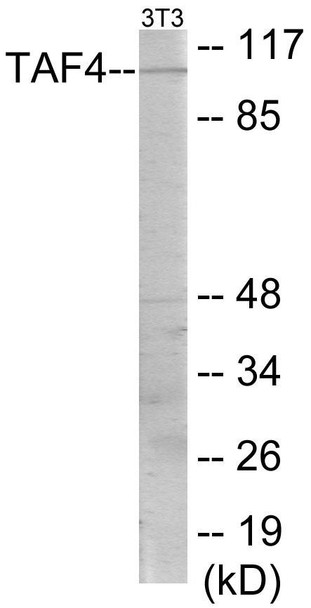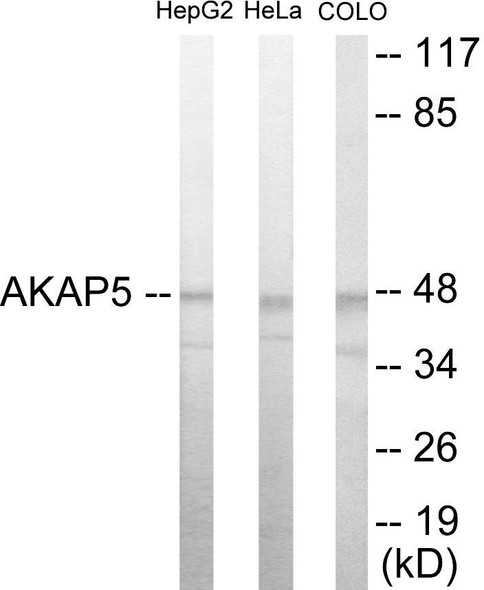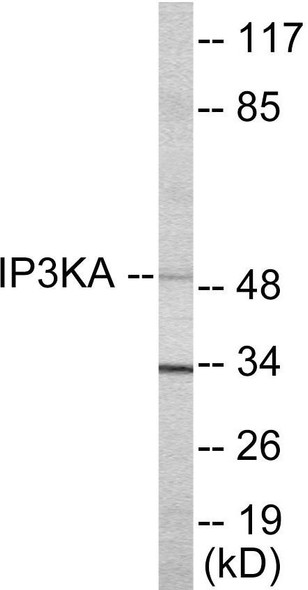Description
TAF4 Colorimetric Cell-Based ELISA
The TAF4 Colorimetric Cell-Based ELISA Kit is a cutting-edge tool designed for the detection and quantification of TAF4 levels in cell samples. With its high sensitivity and specificity, this kit offers researchers accurate and reproducible results, making it ideal for a wide range of cell-based research applications.TAF4, a key component of the TFIID transcription initiation complex, plays a vital role in regulating gene expression and cell proliferation. Its dysregulation has been linked to various diseases, including cancer and developmental disorders, making it a valuable marker for studying these conditions and exploring potential therapeutic interventions.
With the TAF4 Colorimetric Cell-Based ELISA Kit, researchers can gain valuable insights into TAF4 expression levels in cell cultures, leading to a better understanding of cellular mechanisms and potential therapeutic targets. Trust in this innovative kit for precise and reliable results in your cell-based research endeavors.
| Product Name: | TAF4 Colorimetric Cell-Based ELISA |
| Product Code: | CBCAB00920 |
| ELISA Type: | Cell-Based |
| Target: | TAF4 |
| Reactivity: | Human, Mouse |
| Dynamic Range: | > 5000 Cells |
| Detection Method: | Colorimetric 450 nmStorage/Stability:4°C/6 Months |
| Format: | 96-Well Microplate |
The TAF4 Colorimetric Cell-Based ELISA Kit is a convenient, lysate-free, high throughput and sensitive assay kit that can detect TAF4 protein expression profile in cells. The kit can be used for measuring the relative amounts of TAF4 in cultured cells as well as screening for the effects that various treatments, inhibitors (ie siRNA or chemicals), or activators have on TAF4.
Qualitative determination of TAF4 concentration is achieved by an indirect ELISA format. In essence, TAF4 is captured by TAF4-specific primary antibodies while the HRP-conjugated secondary antibodies bind the Fc region of the primary antibody. Through this binding, the HRP enzyme conjugated to the secondary antibody can catalyze a colorimetric reaction upon substrate addition. Due to the qualitative nature of the Cell-Based ELISA, multiple normalization methods are needed:
| 1. | A monoclonal antibody specific for human GAPDH is included to serve as an internal positive control in normalizing the target absorbance values. |
| 2. | Following the colorimetric measurement of HRP activity via substrate addition, the Crystal Violet whole-cell staining method may be used to determine cell density. After staining, the results can be analysed by normalizing the absorbance values to cell amounts, by which the plating difference can be adjusted. |
| Database Information: | Gene ID: 6874/6875, UniProt ID: O00268/Q92750, OMIM: 601796/601689, Unigene: Hs.18857/Hs.369519 |
| Gene Symbol: | TAF4 |
| Sub Type: | None |
| UniProt Protein Function: | TAF4: Makes part of TFIID is a multimeric protein complex that plays a central role in mediating promoter responses to various activators and repressors. Potentiates transcriptional activation by the AF-2S of the retinoic acid, vitamin D3 and thyroid hormone. Belongs to the TAF4 family. |
| UniProt Protein Details: | Protein type:Transcription factor Chromosomal Location of Human Ortholog: 20q13.33 Cellular Component: cytoplasm; nucleoplasm; transcription factor TFIID complex Molecular Function:DNA binding; protein binding; transcription coactivator activity; transcription factor activity Biological Process: positive regulation of transcription, DNA-dependent; RNA elongation from RNA polymerase II promoter; transcription from RNA polymerase II promoter; transcription initiation; transcription initiation from RNA polymerase II promoter |
| NCBI Summary: | Initiation of transcription by RNA polymerase II requires the activities of more than 70 polypeptides. The protein that coordinates these activities is transcription factor IID (TFIID), which binds to the core promoter to position the polymerase properly, serves as the scaffold for assembly of the remainder of the transcription complex, and acts as a channel for regulatory signals. TFIID is composed of the TATA-binding protein (TBP) and a group of evolutionarily conserved proteins known as TBP-associated factors or TAFs. TAFs may participate in basal transcription, serve as coactivators, function in promoter recognition or modify general transcription factors (GTFs) to facilitate complex assembly and transcription initiation. This gene encodes one of the larger subunits of TFIID that has been shown to potentiate transcriptional activation by retinoic acid, thyroid hormone and vitamin D3 receptors. In addition, this subunit interacts with the transcription factor CREB, which has a glutamine-rich activation domain, and binds to other proteins containing glutamine-rich regions. Aberrant binding to this subunit by proteins with expanded polyglutamine regions has been suggested as one of the pathogenetic mechanisms underlying a group of neurodegenerative disorders referred to as polyglutamine diseases. [provided by RefSeq, Jul 2008] |
| UniProt Code: | O00268 |
| NCBI GenInfo Identifier: | 56405299 |
| NCBI Gene ID: | 6874 |
| NCBI Accession: | O00268.2 |
| UniProt Secondary Accession: | O00268,Q5TBP6, Q99721, Q9BR40, Q9BX42, A6NGD9, |
| UniProt Related Accession: | O00268 |
| Molecular Weight: | 110114 Da |
| NCBI Full Name: | Transcription initiation factor TFIID subunit 4 |
| NCBI Synonym Full Names: | TATA-box binding protein associated factor 4 |
| NCBI Official Symbol: | TAF4 |
| NCBI Official Synonym Symbols: | TAF2C; TAF4A; TAF2C1; TAFII130; TAFII135 |
| NCBI Protein Information: | transcription initiation factor TFIID subunit 4 |
| UniProt Protein Name: | Transcription initiation factor TFIID subunit 4 |
| UniProt Synonym Protein Names: | RNA polymerase II TBP-associated factor subunit C; TBP-associated factor 4; Transcription initiation factor TFIID 130 kDa subunit; TAF(II)130; TAFII-130; TAFII130; Transcription initiation factor TFIID 135 kDa subunit; TAF(II)135; TAFII-135; TAFII135 |
| Protein Family: | Transcription initiation factor |
| UniProt Gene Name: | TAF4 |
| UniProt Entry Name: | TAF4_HUMAN |
| Component | Quantity |
| 96-Well Cell Culture Clear-Bottom Microplate | 2 plates |
| 10X TBS | 24 mL |
| Quenching Buffer | 24 mL |
| Blocking Buffer | 50 mL |
| 15X Wash Buffer | 50 mL |
| Primary Antibody Diluent | 12 mL |
| 100x Anti-Phospho Target Antibody | 60 µL |
| 100x Anti-Target Antibody | 60 µL |
| Anti-GAPDH Antibody | 60 µL |
| HRP-Conjugated Anti-Rabbit IgG Antibody | 12 mL |
| HRP-Conjugated Anti-Mouse IgG Antibody | 12 mL |
| SDS Solution | 12 mL |
| Stop Solution | 24 mL |
| Ready-to-Use Substrate | 12 mL |
| Crystal Violet Solution | 12 mL |
| Adhesive Plate Seals | 2 seals |
The following materials and/or equipment are NOT provided in this kit but are necessary to successfully conduct the experiment:
- Microplate reader able to measure absorbance at 450 nm and/or 595 nm for Crystal Violet Cell Staining (Optional)
- Micropipettes with capability of measuring volumes ranging from 1 µL to 1 ml
- 37% formaldehyde (Sigma Cat# F-8775) or formaldehyde from other sources
- Squirt bottle, manifold dispenser, multichannel pipette reservoir or automated microplate washer
- Graph paper or computer software capable of generating or displaying logarithmic functions
- Absorbent papers or vacuum aspirator
- Test tubes or microfuge tubes capable of storing ≥1 ml
- Poly-L-Lysine (Sigma Cat# P4832 for suspension cells)
- Orbital shaker (optional)
- Deionized or sterile water
*Note: Protocols are specific to each batch/lot. For the correct instructions please follow the protocol included in your kit.
| Step | Procedure |
| 1. | Seed 200 µL of 20,000 adherent cells in culture medium in each well of a 96-well plate. The plates included in the kit are sterile and treated for cell culture. For suspension cells and loosely attached cells, coat the plates with 100 µL of 10 µg/ml Poly-L-Lysine (not included) to each well of a 96-well plate for 30 minutes at 37°C prior to adding cells. |
| 2. | Incubate the cells for overnight at 37°C, 5% CO2. |
| 3. | Treat the cells as desired. |
| 4. | Remove the cell culture medium and rinse with 200 µL of 1x TBS, twice. |
| 5. | Fix the cells by incubating with 100 µL of Fixing Solution for 20 minutes at room temperature. The 4% formaldehyde is used for adherent cells and 8% formaldehyde is used for suspension cells and loosely attached cells. |
| 6. | Remove the Fixing Solution and wash the plate 3 times with 200 µL 1x Wash Buffer for five minutes each time with gentle shaking on the orbital shaker. The plate can be stored at 4°C for a week. |
| 7. | Add 100 µL of Quenching Buffer and incubate for 20 minutes at room temperature. |
| 8. | Wash the plate 3 times with 1x Wash Buffer for 5 minutes each time. |
| 9. | Add 200 µL of Blocking Buffer and incubate for 1 hour at room temperature. |
| 10. | Wash 3 times with 200 µL of 1x Wash Buffer for 5 minutes each time. |
| 11. | Add 50 µL of 1x primary antibodies (Anti-TAF4 Antibody and/or Anti-GAPDH Antibody) to the corresponding wells, cover with Parafilm and incubate for 16 hours (overnight) at 4°C. If the target expression is known to be high, incubate for 2 hours at room temperature. |
| 12. | Wash 3 times with 200 µL of 1x Wash Buffer for 5 minutes each time. |
| 13. | Add 50 µL of 1x secondary antibodies (HRP-Conjugated AntiRabbit IgG Antibody or HRP-Conjugated Anti-Mouse IgG Antibody) to corresponding wells and incubate for 1.5 hours at room temperature. |
| 14. | Wash 3 times with 200 µL of 1x Wash Buffer for 5 minutes each time. |
| 15. | Add 50 µL of Ready-to-Use Substrate to each well and incubate for 30 minutes at room temperature in the dark. |
| 16. | Add 50 µL of Stop Solution to each well and read OD at 450 nm immediately using the microplate reader. |
(Additional Crystal Violet staining may be performed if desired – details of this may be found in the kit technical manual.)






